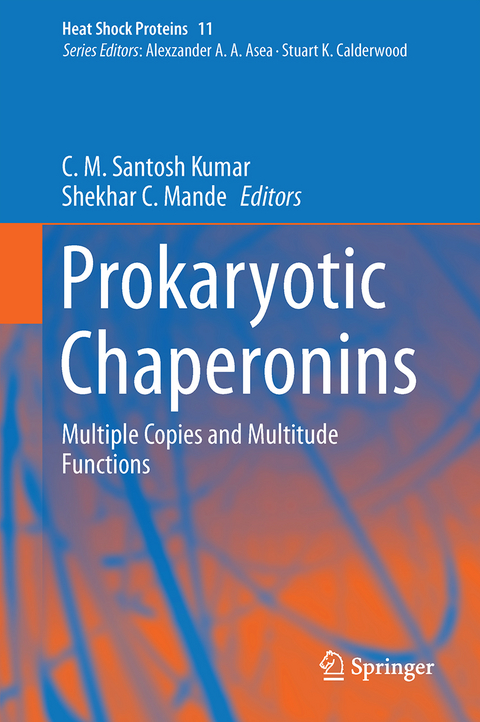
Prokaryotic Chaperonins
Springer Verlag, Singapore
978-981-10-4650-6 (ISBN)
It brings together leading experts from across the globe in offering a detailed account of the structural, biochemical, functional and phylogenetic characteristics of microbial chaperonins for students, researchers and teachers working in the area of microbiology/ biophysics/ parasitology – more specifically, in protein folding pathways.
C. M. Santosh Kumar started his research career as a molecular geneticist, exploring the functions of molecular chaperones in health and disease. His research aims at understanding the functions of the bacterial chaperonins, especially those of the multiple chaperonins. He has demonstrated that activity of a mycobacterial chaperonin is regulated by a phosphorylation switch that facilitates oligomerization. His current interests include unravelling the role of mycobacterial chaperonins in the establishment and progression of tubercular disease. Shekhar C. Mande is a structural biologist interested in understanding the molecular attributes of mycobacterial stress proteins. He started his career as a structural biologist in understanding the structural features of peanut lectin. Further, he became interested in the structure-function relations of mycobacterial stress proteins, such as the redox proteins and heat-shock proteins. He led the way towards the understanding of structural features of the mycobacterial chaperonin proteins. His work demonstrated that mycobacterial chaperonins exhibit non-canonical attributes that are evolved to assist the pathogen in its disease establishment and progression. Concurrently, he began to explore the system wide functional interactions among the mycobacterial proteins. These investigations have led to the identification of several novel interactions that are currently being examined.
Chapter 1. Protein folding in the cell – the role of molecular chaperones.- Chapter 2. Structure and function of the Hsp60 Chaperonins.- Chapter 3. Classical View on the Regulation of Heat-shock response.- Chapter 4. Recent Advances in the Regulation of Heat-shock Response- Chapter 5. Multiple Chaperonins in Bacteria.- Chapter 6. Multiple Chaperonins in Mycobacteria.- Chapter 7. Dynamic interplay of the Myxobacterial chaperonins.- Chapter 8. Division of Labour in Rhizobial Chaperonins.- Chapter 9. Cooperativity of archaeal and bacterial chaperonins.- Chapter 10. Evolution of multiple chaperonins.
| Erscheinungsdatum | 27.09.2017 |
|---|---|
| Reihe/Serie | Heat Shock Proteins ; 11 |
| Zusatzinfo | 38 Illustrations, color; 8 Illustrations, black and white; IX, 170 p. 46 illus., 38 illus. in color. |
| Verlagsort | Singapore |
| Sprache | englisch |
| Maße | 155 x 235 mm |
| Themenwelt | Medizin / Pharmazie ► Physiotherapie / Ergotherapie ► Orthopädie |
| Naturwissenschaften ► Biologie ► Biochemie | |
| Naturwissenschaften ► Biologie ► Mikrobiologie / Immunologie | |
| Naturwissenschaften ► Biologie ► Zellbiologie | |
| Naturwissenschaften ► Physik / Astronomie ► Angewandte Physik | |
| Technik ► Medizintechnik | |
| ISBN-10 | 981-10-4650-6 / 9811046506 |
| ISBN-13 | 978-981-10-4650-6 / 9789811046506 |
| Zustand | Neuware |
| Informationen gemäß Produktsicherheitsverordnung (GPSR) | |
| Haben Sie eine Frage zum Produkt? |
aus dem Bereich


